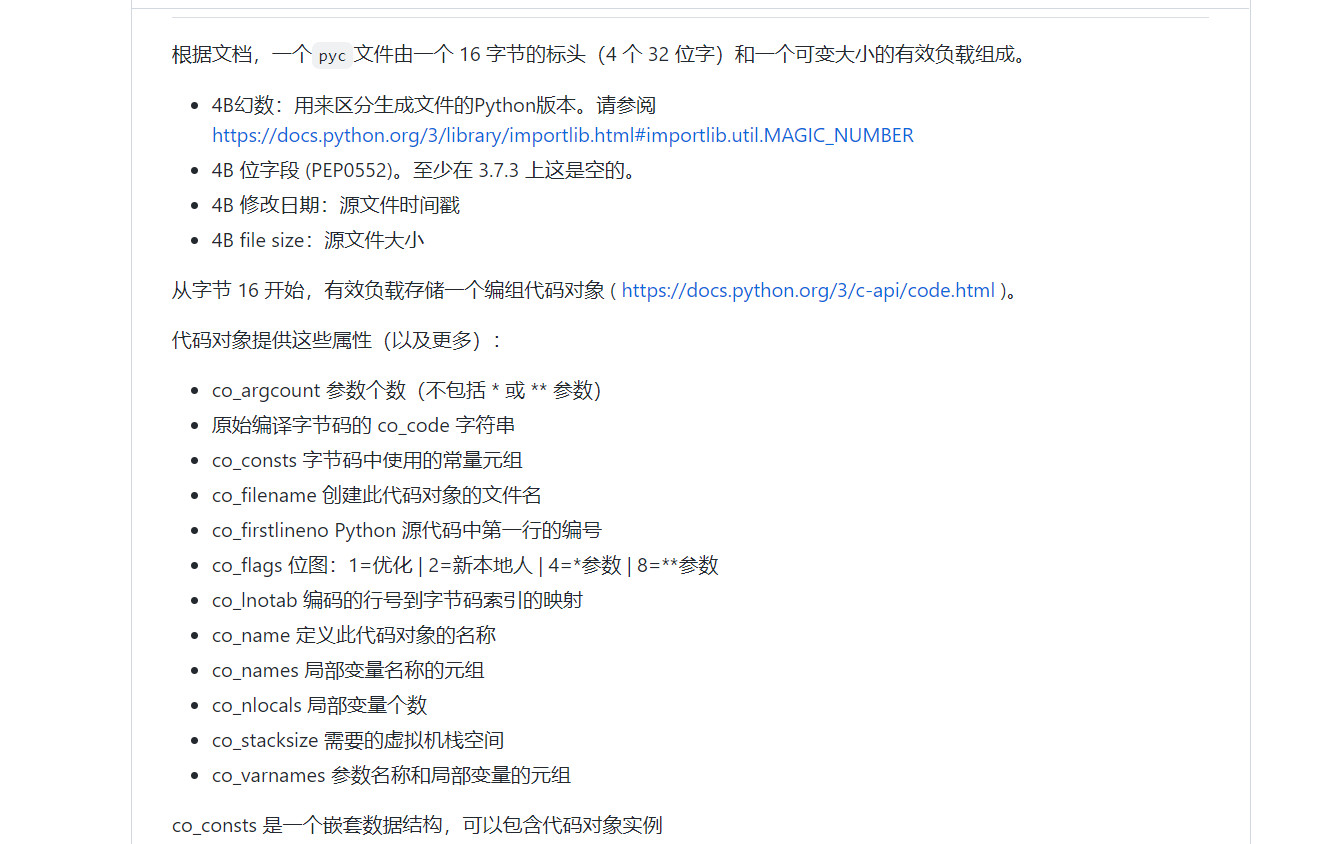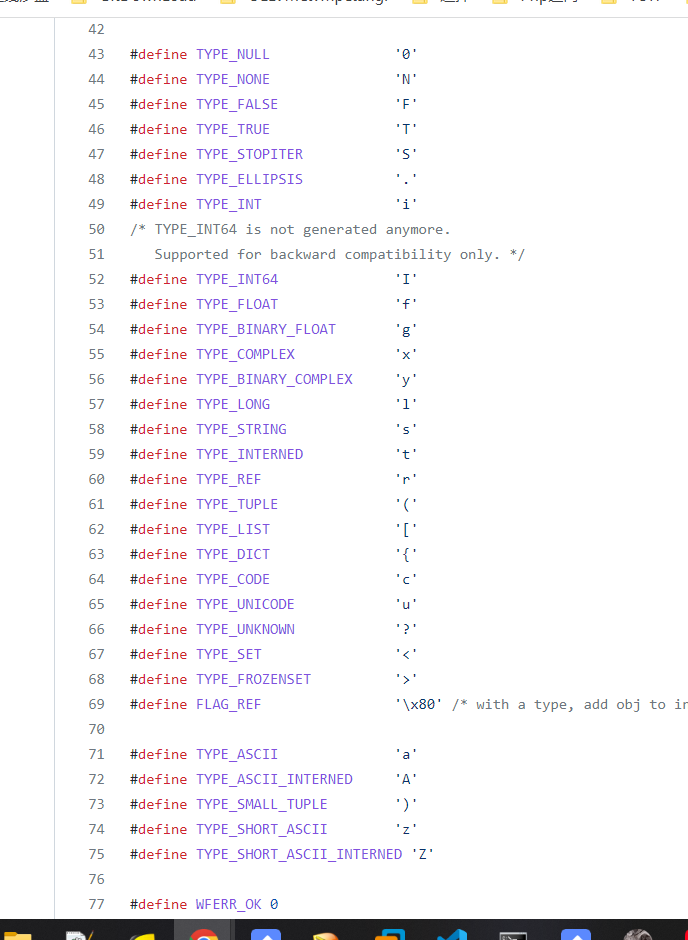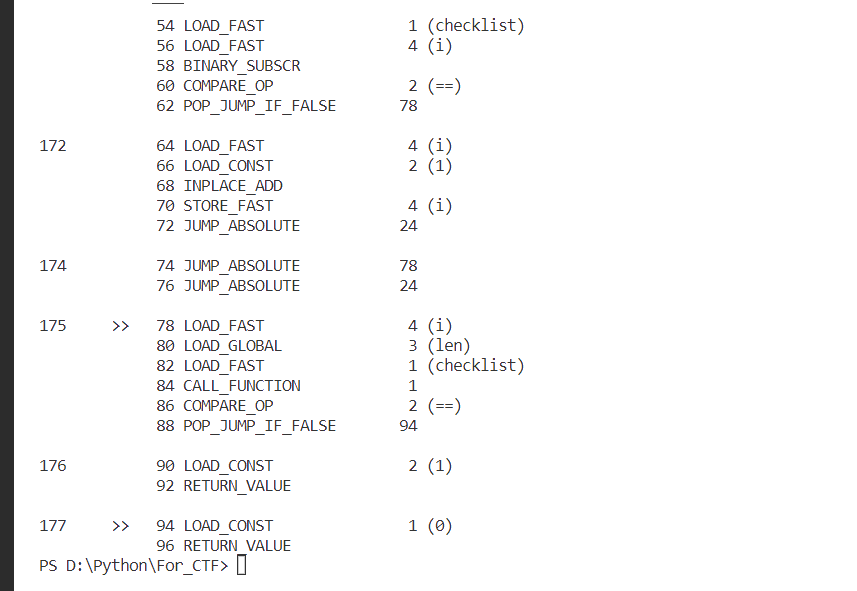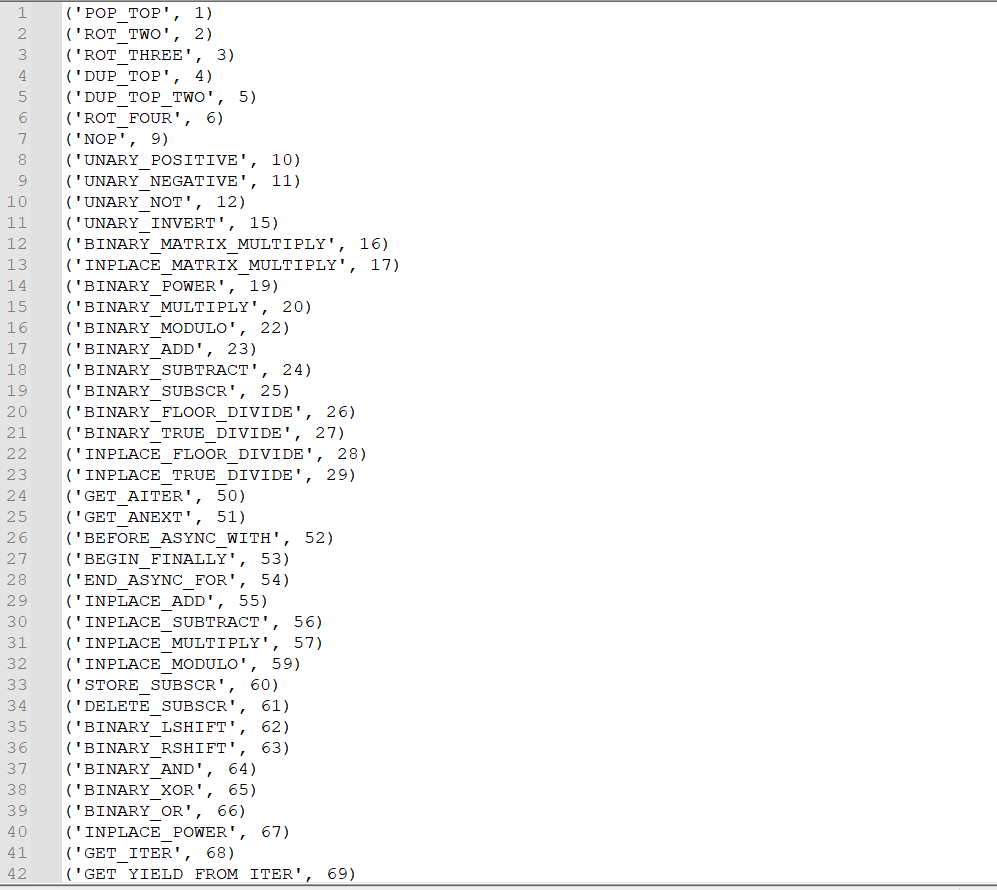python pyc 加花指令
以HWS遇到的一道题为例子来讲解
这篇主要以python3为主
一、pyc文件格式
typedef struct { PyObject_HEAD int co_argcount; /* #arguments, except *args */ int co_posonlyargcount; /* #positional only arguments */ int co_kwonlyargcount; /* #keyword only arguments */ int co_nlocals; /* #local variables */ int co_stacksize; /* #entries needed for evaluation stack */ int co_flags; /* CO_..., see below */ int co_firstlineno; /* first source line number */ PyObject *co_code; /* instruction opcodes */ PyObject *co_consts; /* list (constants used) */ PyObject *co_names; /* list of strings (names used) */ PyObject *co_varnames; /* tuple of strings (local variable names) */ PyObject *co_freevars; /* tuple of strings (free variable names) */ PyObject *co_cellvars; /* tuple of strings (cell variable names) */ /* The rest aren't used in either hash or comparisons, except for co_name, used in both. This is done to preserve the name and line number for tracebacks and debuggers; otherwise, constant de-duplication would collapse identical functions/lambdas defined on different lines. */ Py_ssize_t *co_cell2arg; /* Maps cell vars which are arguments. */ PyObject *co_filename; /* unicode (where it was loaded from) */ PyObject *co_name; /* unicode (name, for reference) */ PyObject *co_lnotab; /* string (encoding addr<->lineno mapping) See Objects/lnotab_notes.txt for details. */ void *co_zombieframe; /* for optimization only (see frameobject.c) */ PyObject *co_weakreflist; /* to support weakrefs to code objects */ /* Scratch space for extra data relating to the code object. Type is a void* to keep the format private in codeobject.c to force people to go through the proper APIs. */ void *co_extra; /* Per opcodes just-in-time cache * * To reduce cache size, we use indirect mapping from opcode index to * cache object: * cache = co_opcache[co_opcache_map[next_instr - first_instr] - 1] */ // co_opcache_map is indexed by (next_instr - first_instr). // * 0 means there is no cache for this opcode. // * n > 0 means there is cache in co_opcache[n-1]. unsigned char *co_opcache_map; _PyOpcache *co_opcache; int co_opcache_flag; // used to determine when create a cache. unsigned char co_opcache_size; // length of co_opcache. } PyCodeObject;
PyCodeObject文件结构则在自己的python目录的Include/code.h 中
这张图是python2 pyc 总体上的结构图
前8字节代表模数和时间戳
第8个字节代表TYPE_CODE的类型,16进制表示为63
其后的四个四字节代表了全局变量的数据
再之后的1字节为TYPE_STRING 字段,0x73表示该字段
再四字节表示code block段的数据部分占用的空间,设为x
之后的x字节就是字节码,表示的可能是一个main函数的字节码(不确定,但一定不是所有的字节码)
x字节后进入TYPE_LIST ....
之后再次进入 TYPECODE ,其可能表示的是一个类或函数,之后表示该函数所使用到的字节码
pyobject结构体如下 (include/object.h)
typedef struct _object { _PyObject_HEAD_EXTRA Py_ssize_t ob_refcnt; struct _typeobject *ob_type; } PyObject;
PyCodeObject 结构体代表了pyc全局结构体
更为清晰的结构如下(python2)

这张图是python2 pyc 总体上的结构图
前8字节代表模数和时间戳
第8个字节代表TYPE_CODE的类型,16进制表示为63
其后的四个四字节代表了全局变量的数据
再之后的1字节为TYPE_STRING 字段,0x73表示该字段
再四字节表示code block段的数据部分占用的空间,设为x
之后的x字节就是字节码,表示的可能是一个main函数的字节码(不确定,但一定不是所有的字节码)
x字节后进入TYPE_LIST ....
之后再次进入 TYPECODE ,其可能表示的是一个类或函数,之后表示该函数所使用到的字节码
虽然是python2版本的,但勉强可以拿来分析,我没可以通过类似上面的分析方式来找到pyc的所有函数的字节码位置、所有变量之类的
其他一些帮助解析pyc结构的知识:

结合这篇python2 的pyc文章来分析pytohn3的pyc文章
python/marshal.c:

二、相关api 或 结构成员
fp = open(r"./new2.pyc","rb") data = fp.read() Pyobj = marshal.loads(data[16:]) #反序列化#python3版本的需要去除前16个字节,python2版本的需要去除前8个字节
1、dis.dis(Pyobj)
dis.dis函数能反编译出所有的pyc的字节码,如下

2、dis.opmap
opmap是dis模块中的一个字典类型成员,他记录了字节码和16进制的对应关系

3、dis.Bytecode
bytecode = dis.Bytecode(Pyobj) for instr in bytecode: print(instr) print(instr.opcode) # 输出所有的opcode名字 print(instr.offset) # 输出所有的自解码偏移
它可以吧字节码更细致的打印出来,不过直接使用的话,只能打印 第一个函数的信息(一般是main函数)
4、dis.get_instructions
for instr in dis.get_instructions(Pyobj): #类似这样: Instruction(opname='STORE_NAME', opcode=90, arg=3, argval='t', argrepr='t', offset=26, starts_line=None, is_jump_target=False) print(instr)
5、Pyobj.co_code
默认打印第一个函数(main)函数中的字节码的16进制信息
由于 python3.6 版本之后,一个python字节码大小为两字节,我们可以使用一下方式来获取字节码数量
len(Pyobj.co_code) // 2
三、一些其他知识
1、python3 pyc 中一个opcode大小为2字节

第一个字节就是操作码,第二个字节则是参数
2、JUMP_FORWARD
JUMP_FORWARD 154 (to 392)
154的意思是从下一条指令开始向'下'跳,直到偏移为154的位置,也就是 2 + 236 + 154 == 392的位置

四、处理花指令

通过 前面提到的dis.opmap 字典找到 EXTENDED_ARG 175 对应的字节码,也就是 90 AF,注意其上一条指令,是 JUMP_FORWARD 36 (to 194) 也就是说从下一条指令开始他要向下偏移
36个字节,我们直接吧这36个字节 nop 掉

再次运行dis.dis函数,发现仍然存在问题

第二处花指令,用上面的方式,重复一下即可
修复完之后,dis.dis函数即可反编译出字节码
但在反编译伪代码的时候则有些困难,只能用 pycdc 反编译出一部分,剩下的还是得靠自己硬读...不知道有没有师傅发现能反编译出完整伪代码的方法



 浙公网安备 33010602011771号
浙公网安备 33010602011771号